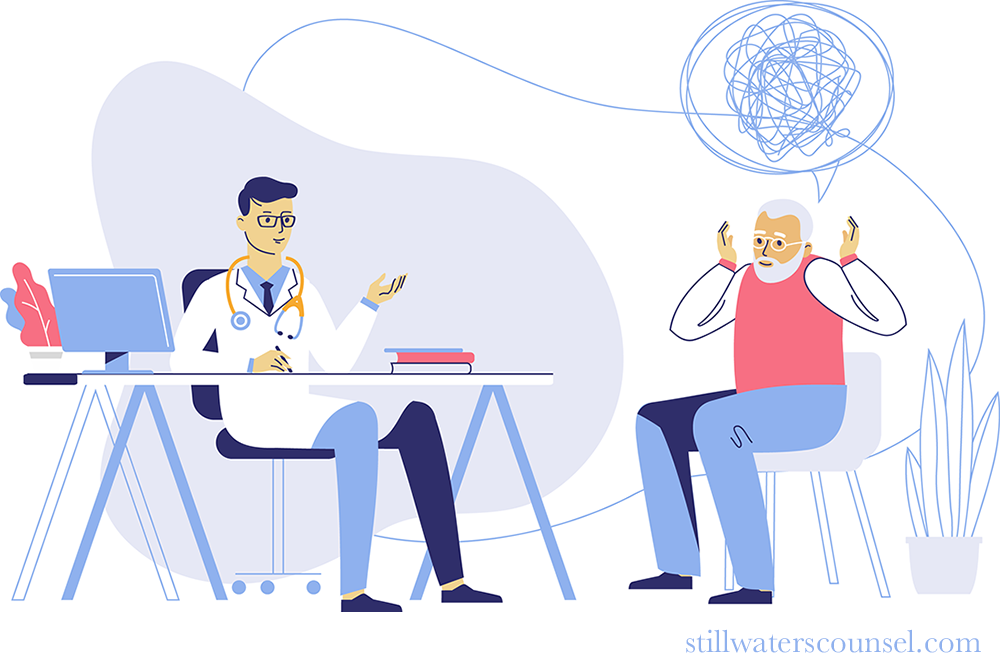
I say ‘diagnosis’ you think…
If your first thought anywhere along the lines of:
- ‘So helpful!’
- ‘Wish I could find one…’
- ‘What a crock of nonsense.’
- ‘Meh… it exists, who cares.’
You’d be on board with common perspectives.
In the world of work-a-day primary care or emergency medicine, diagnoses are often fairly straightforward. Check the boxes of symptoms, do some physical exams, perhaps a lab test or two, and voilá, urinary tract infection or common cold! Have some medicine, or go get some rest. Done and done.
In the world of mental health and chronic (invisible) illnesses, however, the road is rarely so simple. Take two extraordinarily common symptoms: ‘fatigue’ and ‘anxiety’. There are some lab tests we can do (thyroid, blood sugar for example), but because these are subjective symptoms, if labs are normal, it’s tough to pin down a good diagnosis.
Adding to the complexity of getting to an accurate diagnosis is that symptom pictures for different mental health complaints overlap. A lot. A LOT. The cluster of symptoms for ADHD (attention-deficit/hyperactivity disorder) can look a lot like mania or hypomania in bipolar disorders. Depressive symptoms of low mood and fatigue that show up in someone experiencing a chronic invisible (possibly undiagnosed) illness may simply be the result of being in pain day in and day out, rather than “true” depression. Not to mention the common thread of T/trauma underlying so many mental health conditions and experiences.
And, if that weren’t enough, there’s quite a bit of (valid) critique of the DSM (Diagnostic and Statistical Manual of Mental Disorders). The DSM is published by the American Psychological Association, and is the guide for all mental health diagnoses. Some critique goes along with what we just talked about – how can you/should you tease out different ‘disorders’ that have extremely similar symptom clusters?? There’s more critique about the fact that the DSM is time based and culture specific. Being lesbian or gay used to be a diagnosis in the DSM… it was removed in 1973. Meanwhile, diagnoses like Autism Spectrum Disorder (ASD) have generated stereotypical pictures that don’t capture the wide range of experiences of folks who do experience the disability (in the case of ASD, often women and people of color are left out). Meanwhile, acceptable expressions of anxiety in different cultural contexts may not match up with DSM language at all, and therefore be missed and not treated.
So why bother with diagnoses in mental health at all?
Well, for as difficult as they can be to pin down, diagnoses provide a shared language, a common starting point for clinicians. When I, as a doctor, talk to a patient’s therapist, if I say ‘bipolar,’ the therapist understands what I mean, without a long list of symptoms. From there, we can have a conversation about whether or not we agree, and why or why not. This saves a ton of time and facilitates effective coordination of care across a provider team.
Along those lines, in order for folks to be able to have their care paid for by insurance companies, there must be a diagnosis attached. The merits of this system are obviously highly debatable, and it’s the system in which we have to operate if we want insurance coverage.
Finally, (and perhaps most importantly) for folks who have experienced mental health symptoms for the whole of their lives, and who have thought they were ‘broken’ and have never been able to get a clear answer about what their issue was, having a diagnosis can be a massive relief. Deep exhale, sinking into the comfiest couch sort of relief. First because simply being able to name something helps. It’s no longer a mysterious amorphous blob, but a thing with defined edges we can look at and examine. And, because with diagnosis comes options for treatment and accommodation. It’s possible that, if we can name it and examine it, we can start to do something about it. Hope creeps in that life might get a touch easier.
If you’d like to learn more, email info@stillwaterscounsel.com to schedule an appointment with Dr Katherine!
